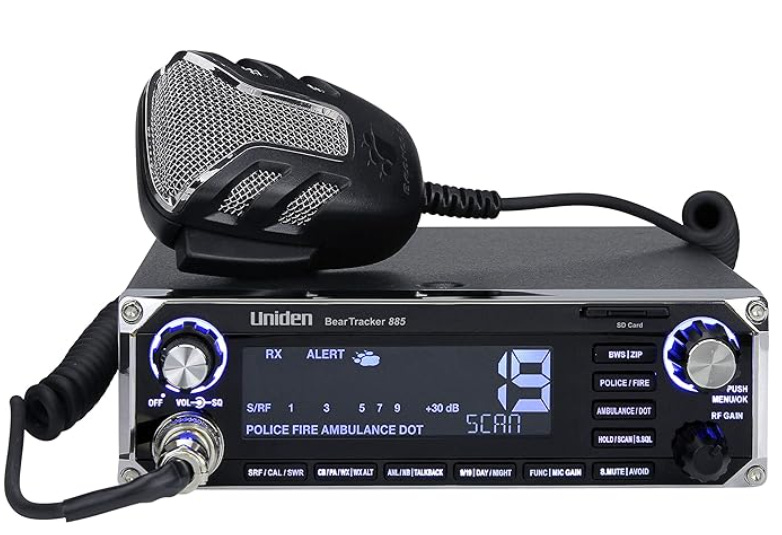Going dark: Police agencies in South Dakota's largest cities encrypting emergency response radio traffic
New transmissions systems bring option to move all police, fire, ambulance communications offline for Rapid City, Sioux Falls, Pennington County and Minnehaha County
Emergency response radio signals in South Dakota’s two largest counties are going encrypted.
And that means the days of listening to scanner traffic between 911 dispatchers, police officers, firefighters, and emergency medical technicians are over in Sioux Falls, Rapid City and across both Minnehaha County and Pennington County.
Sioux Falls Police Chief Jon Thum told The Dakota Scout this week that all county-wide radio traffic between first responders — police, fire, ambulance, and the 911 dispatch center — will no longer be available on open airways beginning later this month.
The move to encrypted radio transmission is touted as a benefit to law enforcement and victim safety. But that also brings with it concerns about government transparency, particularly from news media outlets and civic watchdogs.
NEWS: Noem, Jackley and legislative leaders ask Supreme Court for opinion on state contracts
The coming radio silence coincides with a nationwide push by the Federal Communications Commission for every state to modernize all of its emergency response communications capabilities. States have until 2025 to adhere to what’s called Project 25.
That project has the state of South Dakota spending $5.1 million on hardware and software updates across the 70 towers on the state radio network. And the digital capabilities of the new equipment and systems also gave the agencies using the radio towers the option to shield their communication from the public.
“With rising attacks on officers and even ambushes, this gave us the opportunity to really delve into that encryption piece, and decide for an officer safety reason that it’s something we want to pursue,” Thum said. “While one could happen without the other, … we realize that other agencies have done it, and there are a lot of officer safety benefits and victim protection benefits that come along with it.”
The first day Sioux Falls and Minnehaha County emergency response radio traffic channels go dark on police scanners and CB radios is Nov. 13. Thum said the date is tentative. Rapid City and Pennington County officials are expected to share details about the scheduled change at a Friday morning press conference, being held jointly with the Sioux Falls Police Department and the Minnehaha County Sheriff’s Office.
The Sioux Falls Fraternal Order of Police, representing sergeants and officers on the city police force, supports moving radio traffic offline.
Sioux Falls FOP President Jason Holbeck said bad actors are able to use police scanners, via cellphone apps or radios, to disrupt police work, whether by showing up to interfere with a traffic stop or to hinder an investigation.
“From an officer safety standpoint, it is to our benefit because often times, that communication can reveal plans or tactics that we wouldn’t otherwise want public in the moment,” he said. “If we’re conveying all of these details about our investigation, our efforts to apprehend somebody can be undermined.”
Holbeck noted the union was not involved in the decision to switch to encrypted.
But encrypting radio transmissions doesn’t just keep the bad guys from listening.
It’ll also mean news media and the general public will not have the ability to listen to first-responder interactions. And in a state with government sunshine laws that already keep law enforcement activity heavily veiled, publicly accessible radio transmissions have been among the only tools available for news media and civic watchdogs to monitor police activity, said Dave Bordewyk, executive director of the South Dakota News-media Association, which represents dozens of South Dakota newsrooms.
In other states, police reports are considered public records. South Dakota, though, is one of the only states where those aren’t released to the public.
“We already have little public access to law enforcement activity, particularly when there’s something happening involving emergency response. So this is just like shutting the door tighter for access,” Bordewyk said. “It makes a bad thing worse.”
In some jurisdictions, authorities have made radio transmissions between first responders available on a delay or by request.
Thum pointed to the police department’s online resources like the police call log, which is updated every few minutes, and an activity map for access to current law enforcement and emergency response activity. But as of now, requests for radio communications will be handled like any other request for information, and there are no plans to otherwise make transmissions available for public consumption, he said.









This is going to happen nationwide. Criminals use the police band to assist in criminal activity. By encrypting, we non-criminals are helped.